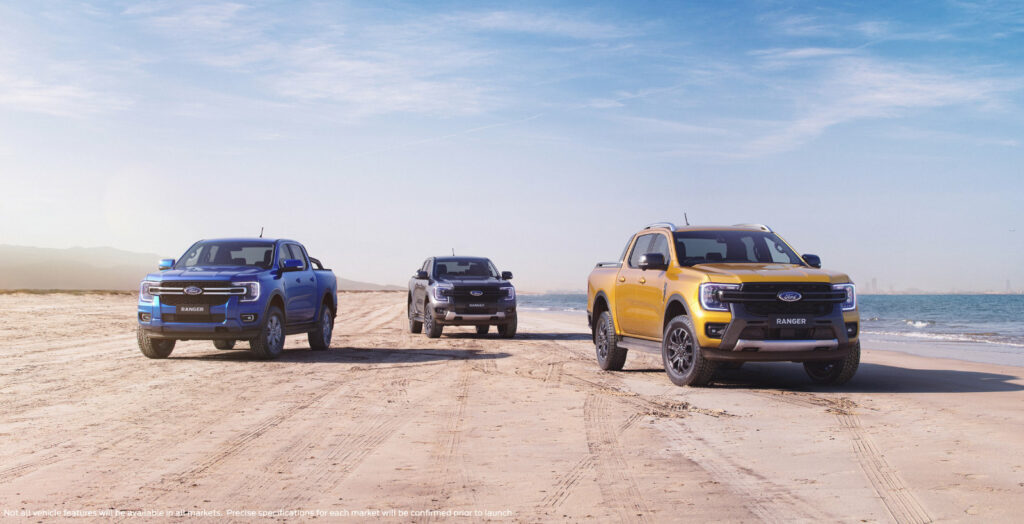Although Autocade’s viewership has gone down, it’s still fascinating (maybe only to me) to see what the top 10 look like since the site was reinstalled last year. Toyota Corolla (E210) (7,307 views) Ford Taunus 80 (5,830 views) Daewoo Winstorm (4,943 views) Opel Astra J (4,688 views) Ford Fiesta Mk VII (4,683 views) […]
Tag: Ford
Ford means nothing at all

I followed a Ford Ranger today and felt nothing. This isn’t as strange as it sounds. Ford has become a truck company here, too, and there’s nothing about the blue oval that stirs the soul any more. Mustangs are rare, and Ford—which once democratized flash—doesn’t have the brand equity that it used to. Never mind […]
Autocade slowly gets to 29 million page views
It took a while, but Autocade has now finally reached 29 million page views. The stats’ page since the count was reset shows 1,362,506 views. Add that to the 27,647,011 recorded on March 19, 2022, and we have well and truly crossed the 29 million mark (by 9,517, in fact). We probably got there yesterday […]
Read More… from Autocade slowly gets to 29 million page views
If corporate America says it, it’s probably untrue
Le dernier. I see the Le Snak range has now left us, after its US owner PepsiCo cited a lack of demand. I call bullshit, since during 2021 it was becoming increasingly difficult to find them on the shelves. Throttling distribution is not the same as a lack of demand, something you see time […]
Read More… from If corporate America says it, it’s probably untrue
Most of our top 10 sellers reflect our ignorance
The Suzuki Swift: one of the saving graces on New Zealand’s top 10 list. At the Opel relaunch briefing yesterday, I was shocked to find that these were New Zealand’s top selling vehicles for 2021. I knew about the first two, but had always assumed a Toyota Corolla would follow, plus some regular cars. […]
Read More… from Most of our top 10 sellers reflect our ignorance
GM and Ford keep falling down the top 10 table
It’s bittersweet to get news of the Chevrolet Corvette from what’s left of GM here in New Zealand, now a specialist importer of cars that are unlikely to sell in any great number. And we’re not unique, as the Sino-American firm pulls out of entire regions, and manufactures basically in China, North America, and South […]
Read More… from GM and Ford keep falling down the top 10 table
Have you driven a Ford … lately? Probably not
Ford’s Brazilian line-up, 2021. Once upon a time, there were locally developed Corcels and Mavericks; even the EcoSport was a Brazilian development. Today, it’s Mustang, a couple of trucks, and a rebadged Chinese crossover. We heard a lot about the demise of Holden as GM retreats from continents at a time, seemingly in a […]
Read More… from Have you driven a Ford … lately? Probably not
Rocketman’s most annoying scene
Originally noted at NewTumbl, this is the sort of stuff that can annoy me in films. This is a scene from Rocketman, where Elton John (Taron Egerton) arrives at the Troubador in Los Angeles in 1970. Car people, spot the problems. If you’re like me, you’re going: Elton’s in a 1978 Lincoln Continental […]
Brand, sub-brand or model? China’s getting into a confusing phase
The Dongfeng Aeolus AX7. But just where does Aeolus sit when it comes to indexing in Autocade? This is something that might have to come out in the wash, and it might take years. I think we can all agree that Ssangyong is a marque or a make, and Korando is a model. Never […]
Read More… from Brand, sub-brand or model? China’s getting into a confusing phase
Search engines favour novelty over accuracy and merit
I was chatting to another Tweeter recently about the Ford I-Max, and decided I’d have a hunt for its brochure online. After all, this car was in production from 2007 to 2009, the World Wide Web was around, so surely it wouldn’t be hard to find something on it? I found one image, at […]
Read More… from Search engines favour novelty over accuracy and merit